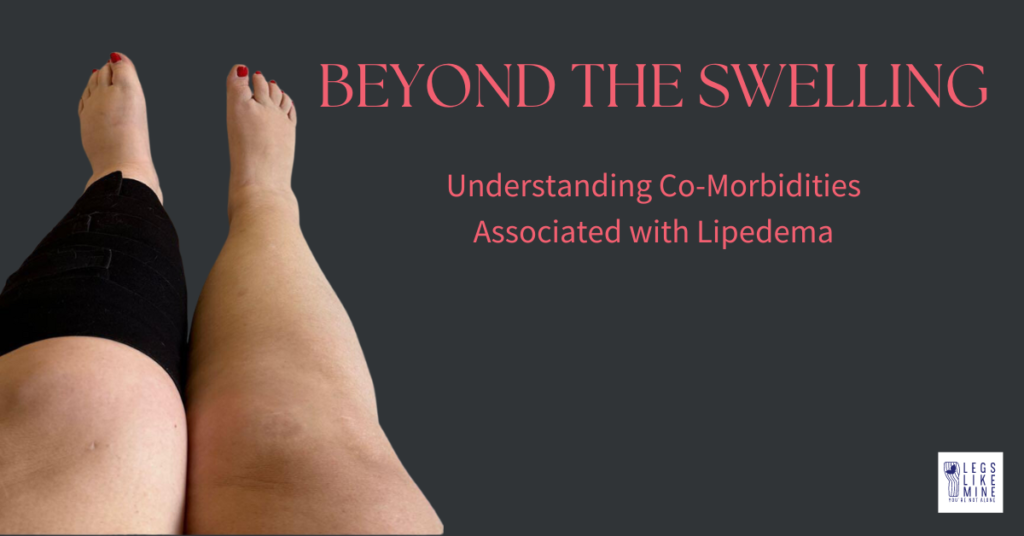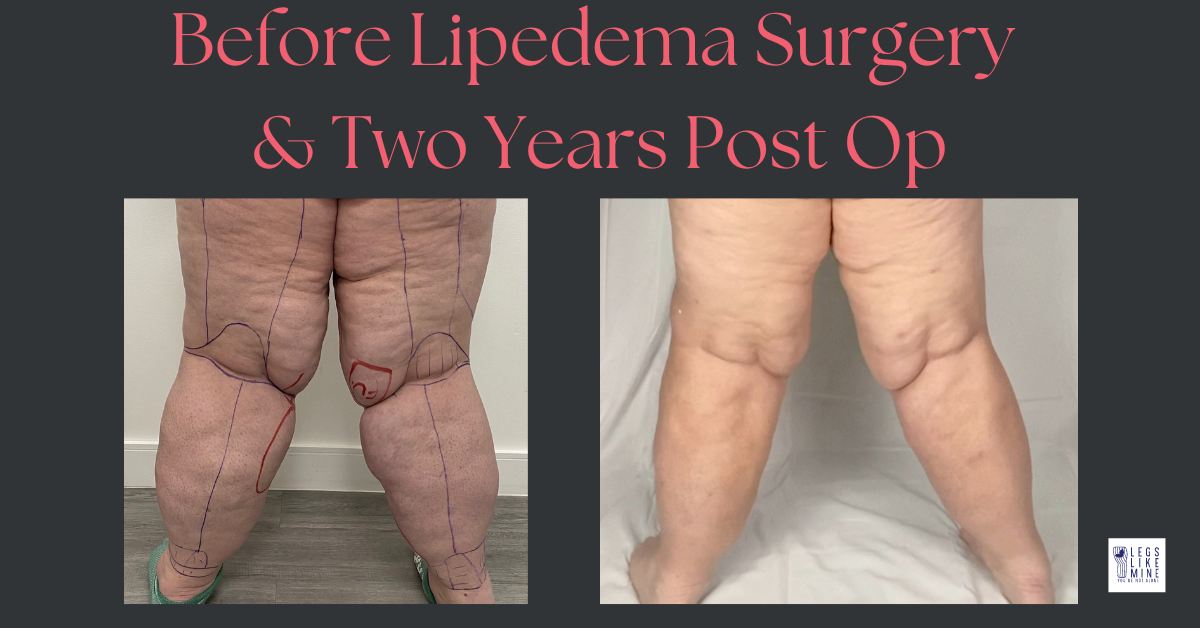Hi friends! I see so many posts on the forums that start like this…”anyone else out there also have POTS, HEDS, MCAS…?” A lot of times this will trigger multiple responses from ladies who have more than one thing going on, with lipedema being our overlap. So I thought I’d put together some information to use as an FAQ for ladies who are just seeing the connection of comorbidities. Enjoy!
Let’s start with the basics. What is lipedema?
Lipedema is a chronic and often underdiagnosed condition characterized by an abnormal accumulation of fat primarily in the hips, thighs, and lower legs. Although it mainly affects women, men can also develop lipedema – yep! One aspect that makes this condition complex is its association with comorbidities, which are additional health conditions that can coexist with lipedema.
For more information on my personal lipedema journey and the journeys of several other women with lipeema, grab a copy of my first book, Jeans on a Beach Day.
Here are a few things we may see with lipedema. Also, my friend, and esteemed professional occupational therapist Karen Ashforth has this awesome video she made with Lympha Press to talk about POTs, Mast Cell Activation Syndrome and Hypermobile Ehlers Danlos syndromes, which we also see very frequently with lipedema. Check it out!
Here are a few other things we see as comorbidities with lipedema:
- Obesity and Metabolic Disorders
One of the most common comorbidities linked to lipedema is obesity. While lipedema itself involves a disproportionate accumulation of fat, individuals with this condition may be at a higher risk of gaining excess weight due to the impact of lipedema on metabolism and physical activity limitations. As obesity is a risk factor for many other health issues, managing weight through a balanced diet and exercise becomes crucial for those with lipedema.
- Lymphatic and Circulatory Problems
Lipedema can cause the lymphatic system to function less efficiently, leading to a buildup of lymphatic fluid in the affected areas. This can result in lymphedema, a condition characterized by swelling and fluid retention. Additionally, lipedema can impair blood circulation, contributing to venous insufficiency and an increased risk of blood clots. Compression therapy and regular exercise can help improve circulation and alleviate the symptoms associated with these comorbidities.
- Pain and Reduced Mobility
Lipedema can cause significant discomfort, pain, and tenderness in the affected areas due to the excess fat and inflammation. Over time, this can lead to reduced mobility and a decreased quality of life. Physical therapy, low-impact exercises, and pain management strategies are essential for maintaining mobility and managing the pain associated with lipedema.
- Psychological Impact
Living with lipedema can have a profound psychological impact on affected individuals. The visible changes in body shape, as well as the pain and limitations it imposes, may lead to body image issues, anxiety, and depression. Recognizing and addressing the emotional aspect of lipedema is crucial for the overall well-being of those living with this condition. Support groups, counseling, and mindfulness practices can provide valuable assistance in coping with the emotional toll of lipedema.
- Joint Problems
As lipedema progresses, the excess weight and swelling can put extra strain on the joints, leading to osteoarthritis and other joint-related issues. Strengthening exercises, maintaining a healthy weight, and using assistive devices when necessary, can help alleviate the pressure on the joints and enhance mobility.
Lipedema is a complex condition that extends beyond the visible swelling in the affected areas. Its comorbidities can significantly impact an individual’s overall health and well-being. Early diagnosis and proper management of lipedema are essential to address both the primary condition and its associated comorbidities effectively.
Managing your condition when you have a team of folks who get the whole picture to help you is the best case scenario. I recommend places with a one stop shop for complete care involving medical professionals, nutritionists, physical therapists, and mental health experts because a team approach with shared medical records can be crucial for a comprehensive treatment plan. By combining lifestyle modifications, such as a balanced diet and regular exercise, with targeted therapies to manage the associated comorbidities, folks like us, with lipedema can thrive in our lives and improve overall health and happiness. Awareness about lipedema and its comorbidities is essential to ensure timely intervention and support for those affected by this condition.

Please feel free to share with friends who may want to know more! Have a good one!
Susan
Contains paid ads. As an Amazon associate, I receive commissions on sales.











